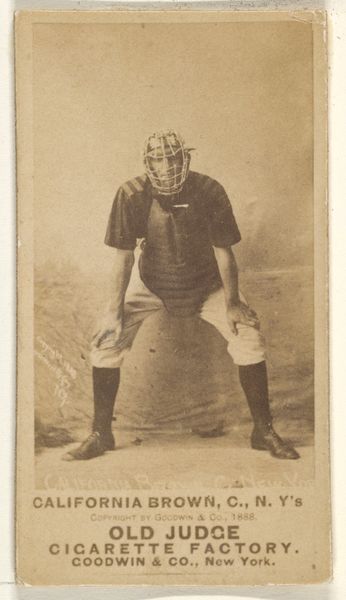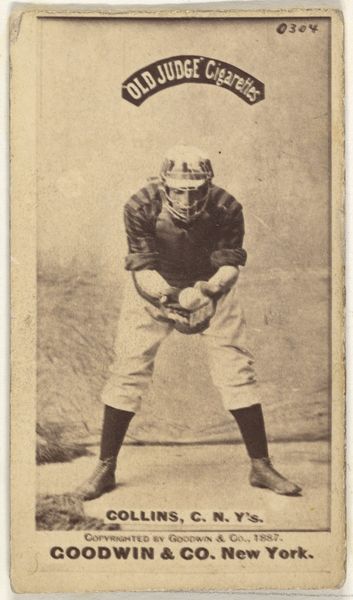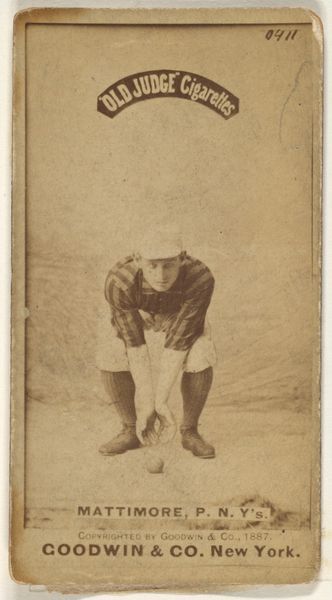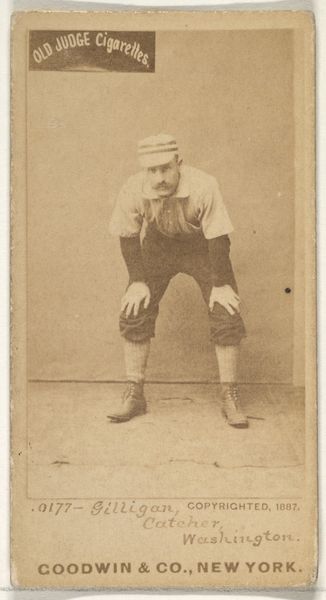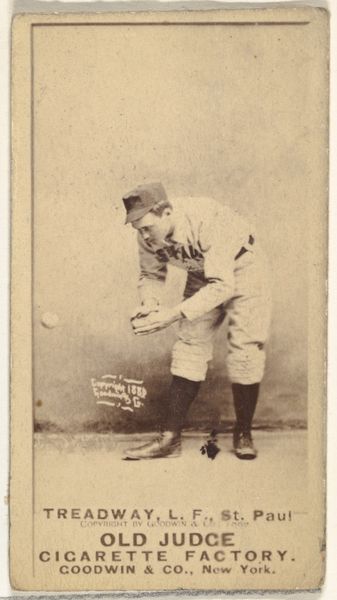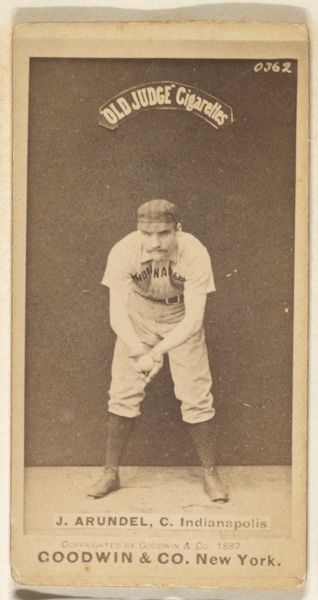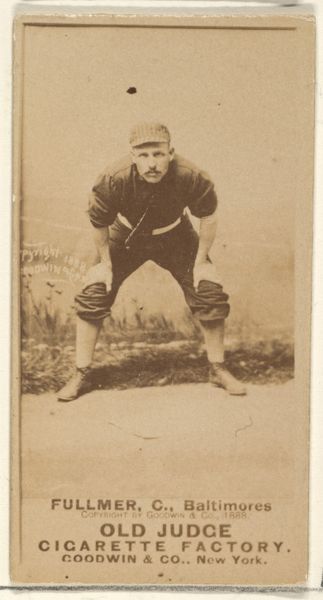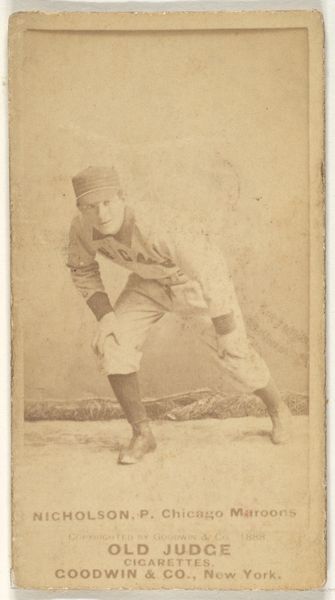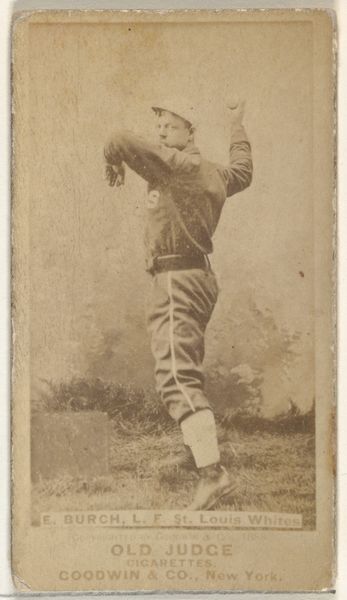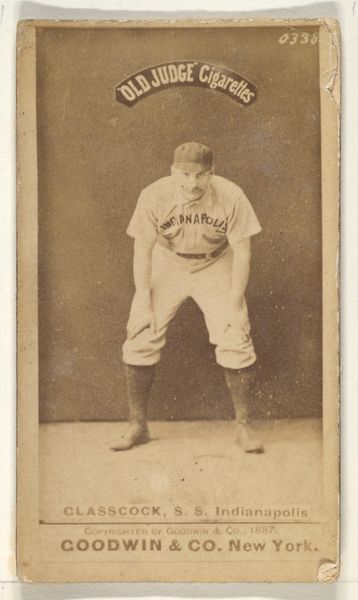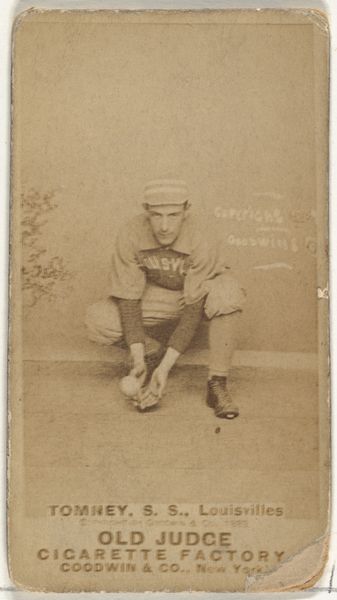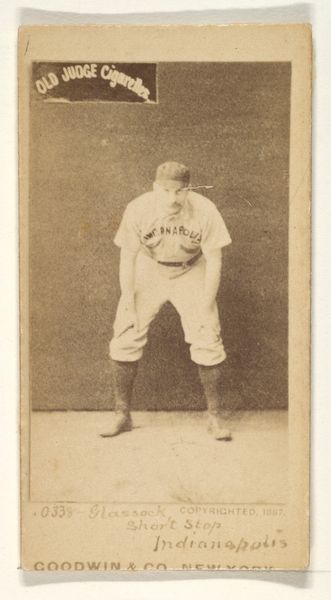
John Thomas Pickett, Shortstop, St. Paul Apostles, from the Old Judge series (N172) for Old Judge Cigarettes 1888
0:00
0:00
print, photography
#
portrait
# print
#
baseball
#
photography
#
men
#
athlete
Dimensions: sheet: 2 11/16 x 1 3/8 in. (6.9 x 3.5 cm)
Copyright: Public Domain
Curator: At first glance, the sepia tone lends this photograph a wonderful, nostalgic warmth, doesn’t it? Editor: It does. I'm immediately drawn to the texture; the paper feels aged and tactile just by looking at it. This card features John Thomas Pickett, a shortstop for the St. Paul Apostles, part of the Old Judge series produced by Goodwin & Company in 1888 to promote their cigarettes. Curator: Ah, yes. So we immediately confront the means of production and circulation – a piece of sporting history explicitly tied to a consumable product, to the marketing and distribution of tobacco. Editor: Exactly! The context is crucial. These cards weren’t just innocent depictions of athletes; they were designed to drive sales. Imagine the power dynamics: baseball players, cigarette manufacturers, and consumers all interwoven in this cultural moment. This intersects neatly into baseball as a leisure culture emerging parallel to industry at the turn of the century, becoming ever more popular along with things like newspapers or fairs as new types of media rise to ubiquity. Curator: And look at the materiality! The albumen print, carefully adhered to card stock. Each card a small-scale industrial product reflecting standardization and early image mass production processes, and by the brand-labeling along the bottom edge you also gain some insight into the consumer and marketing trends of the era. Editor: It's interesting how photography became implicated in both celebrating athletic prowess and boosting consumerism. How do we reconcile these things today? Did it degrade from "honest work ethic" to one predicated more explicitly on capital and profit? The Old Judge series really provides us a tangible way to examine the commercialization of leisure and image in America. Curator: A collision of culture and industry rendered beautifully in tones of sepia. Each detail reveals another facet of material conditions. Editor: Indeed. Reflecting on this little cardboard card opens up such fascinating questions about baseball, commercialization, and photographic reproduction at the close of the 19th century.
Comments
No comments
Be the first to comment and join the conversation on the ultimate creative platform.
